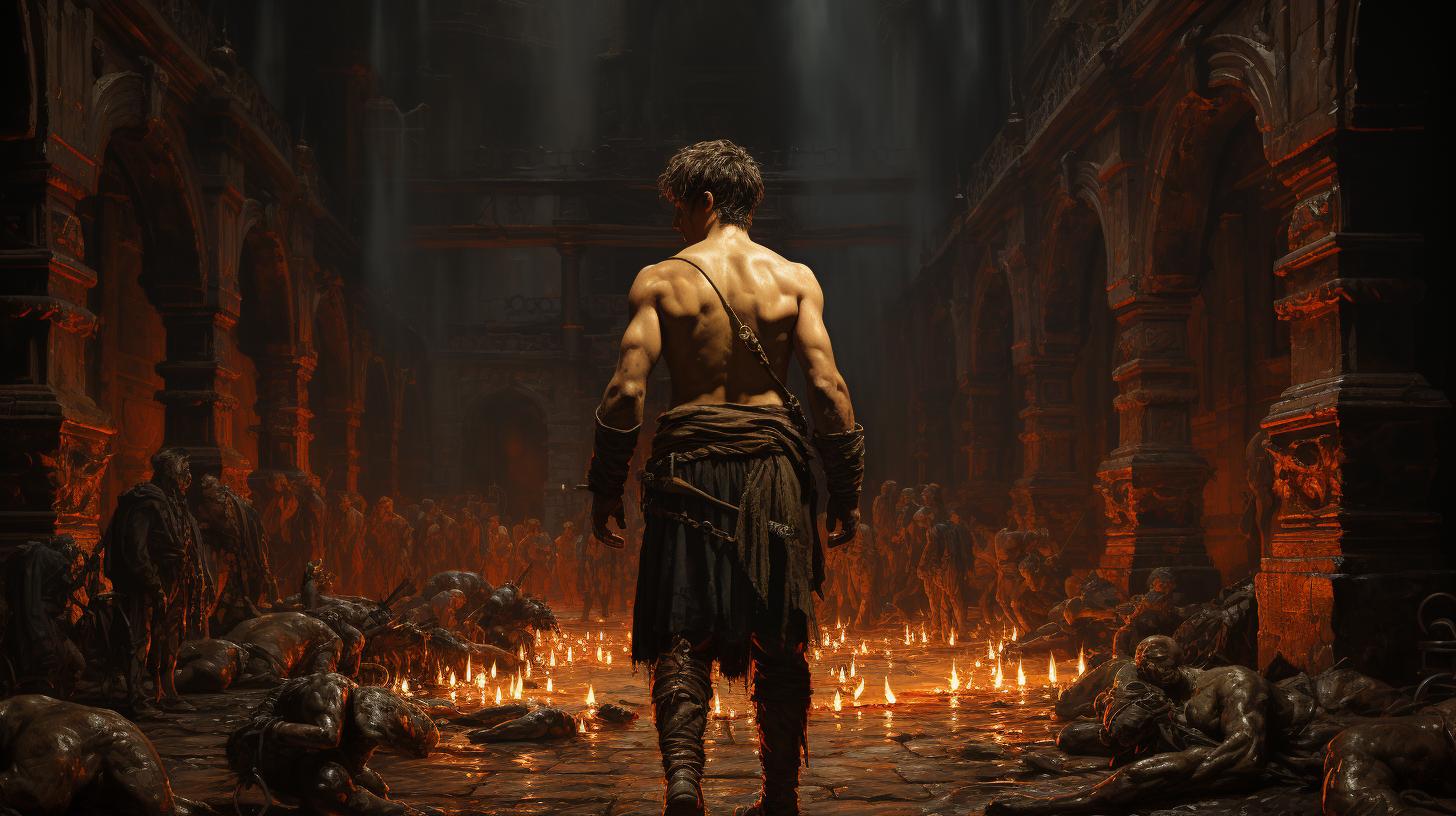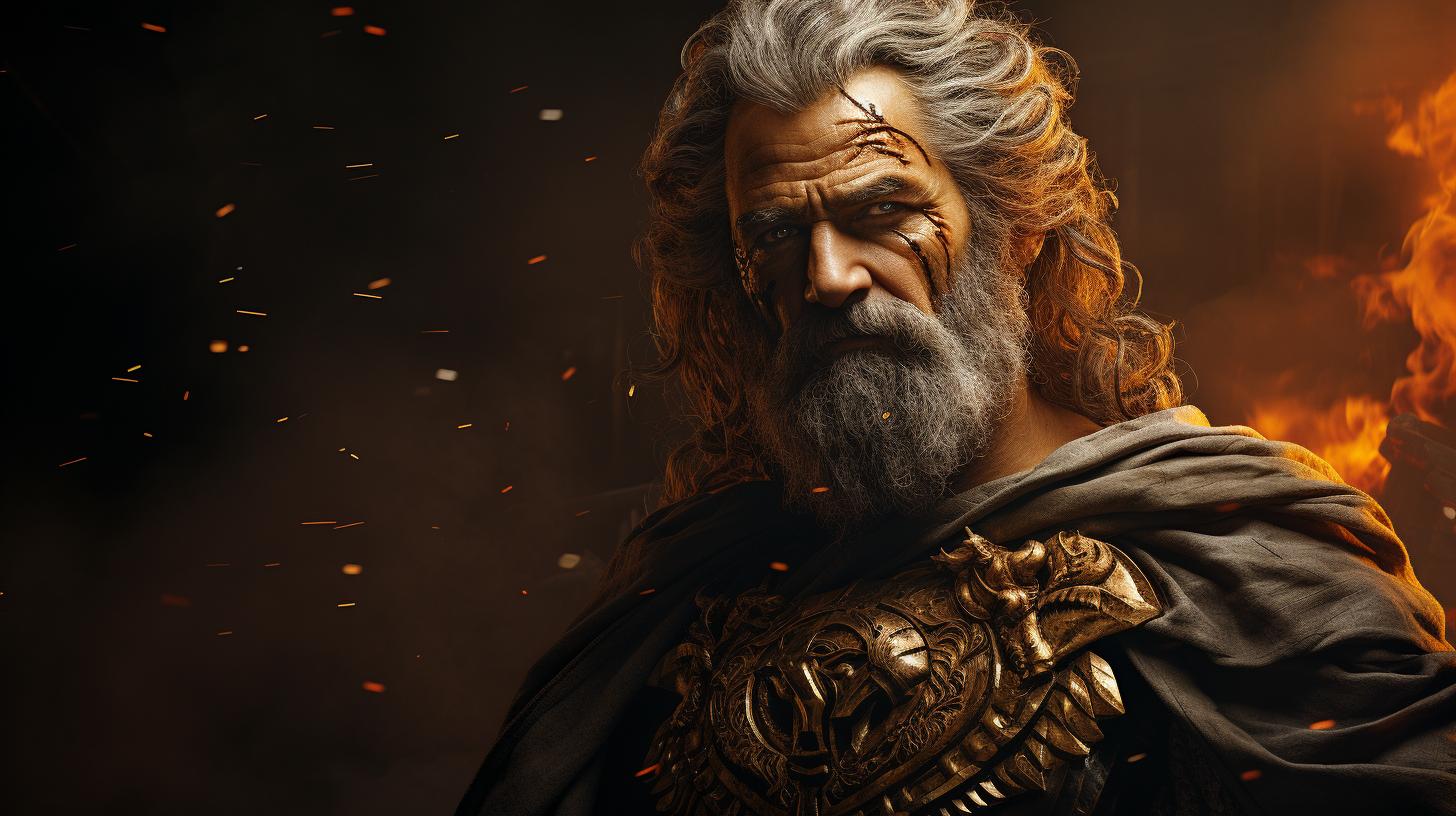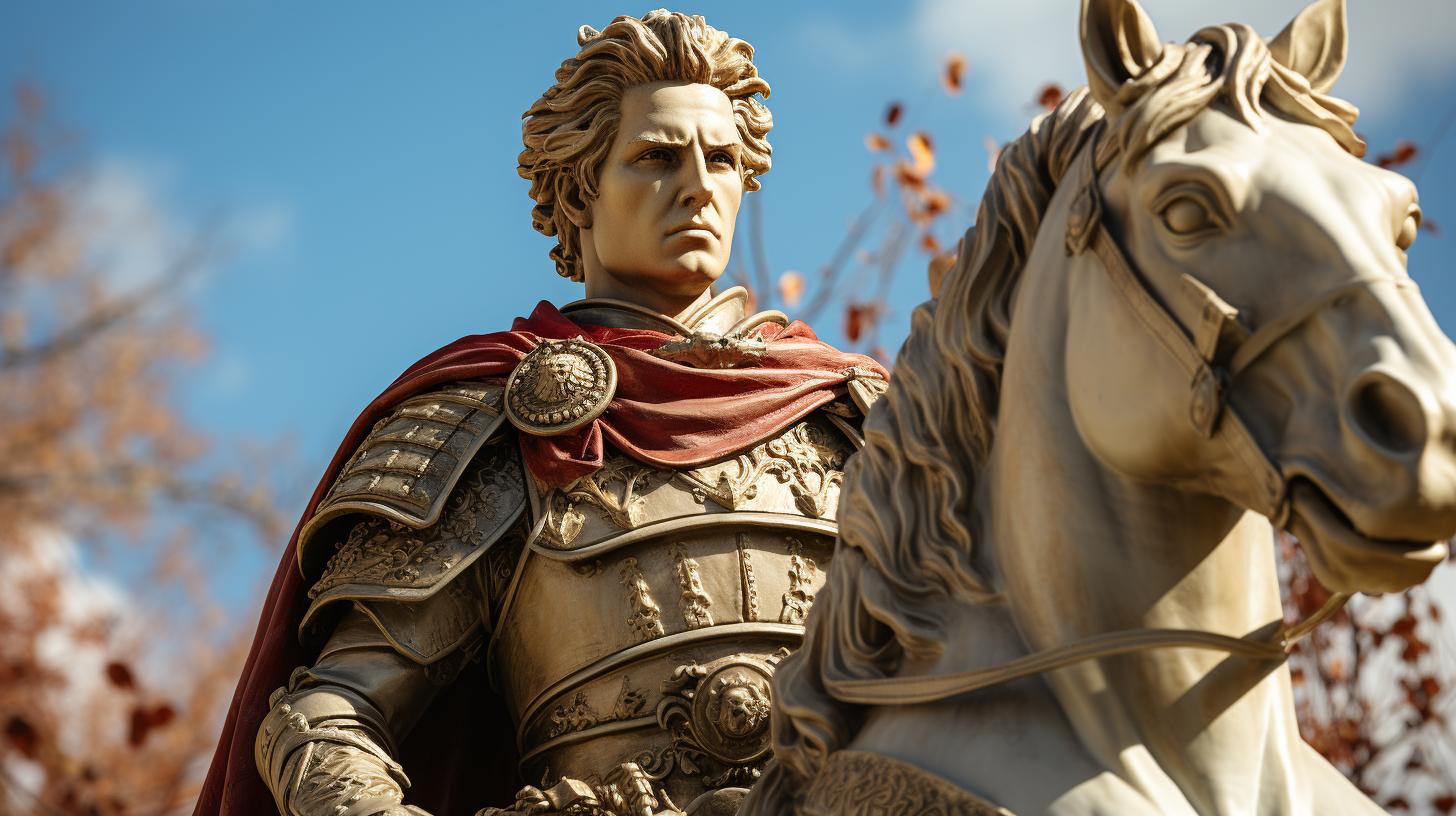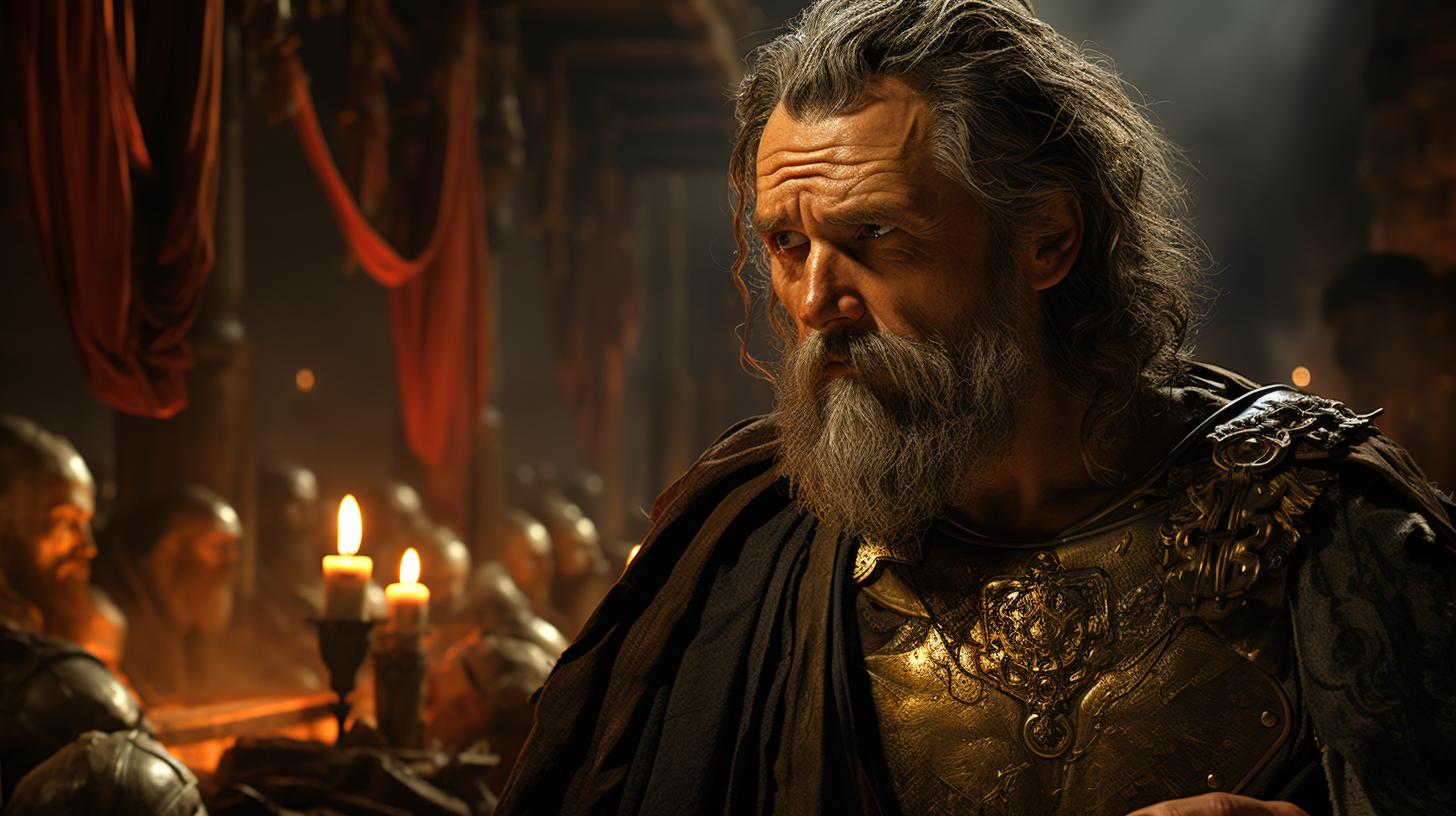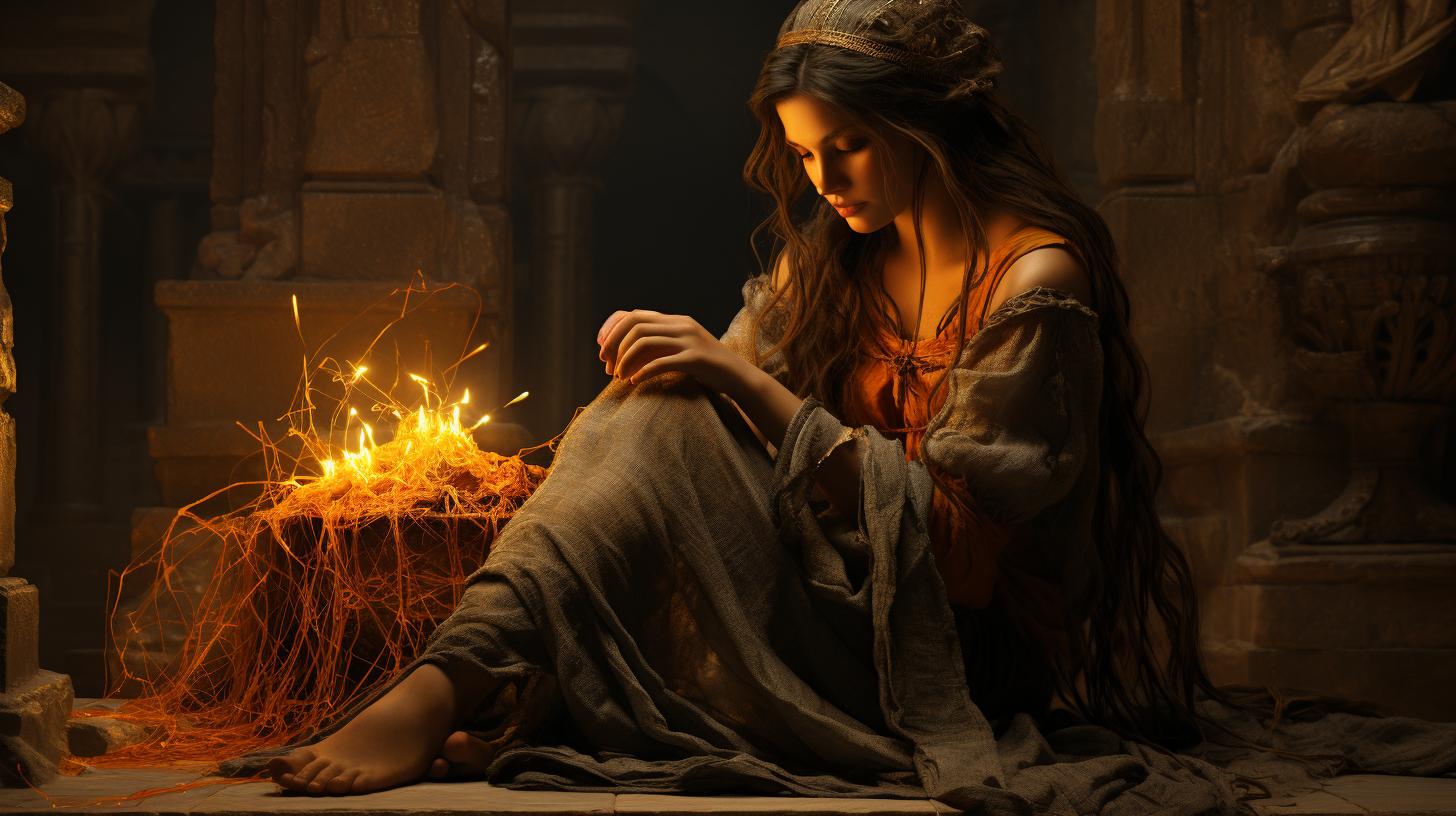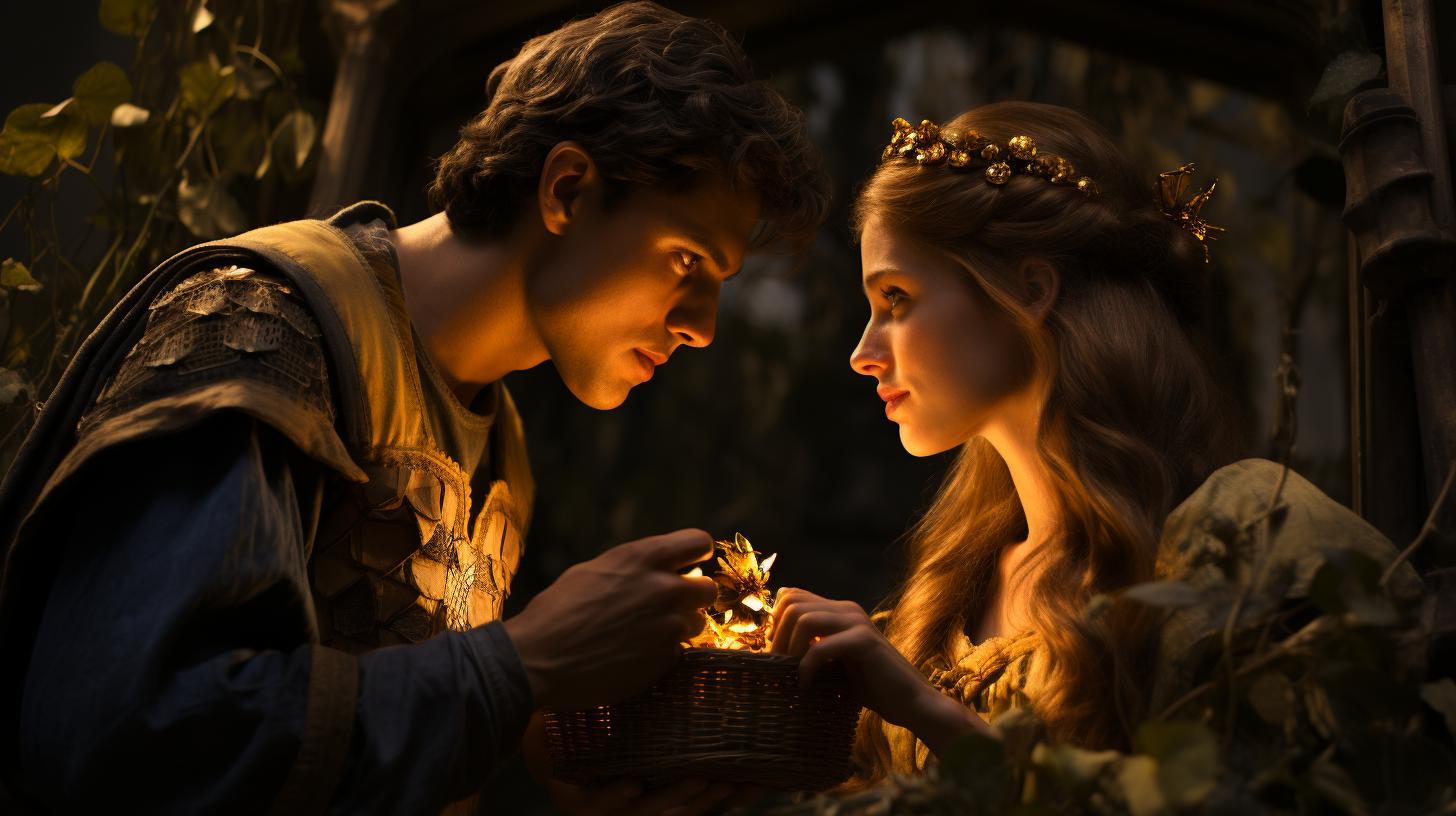Theseus and the Minotaur Myth: A Gripping Tale of Heroism and Adventure
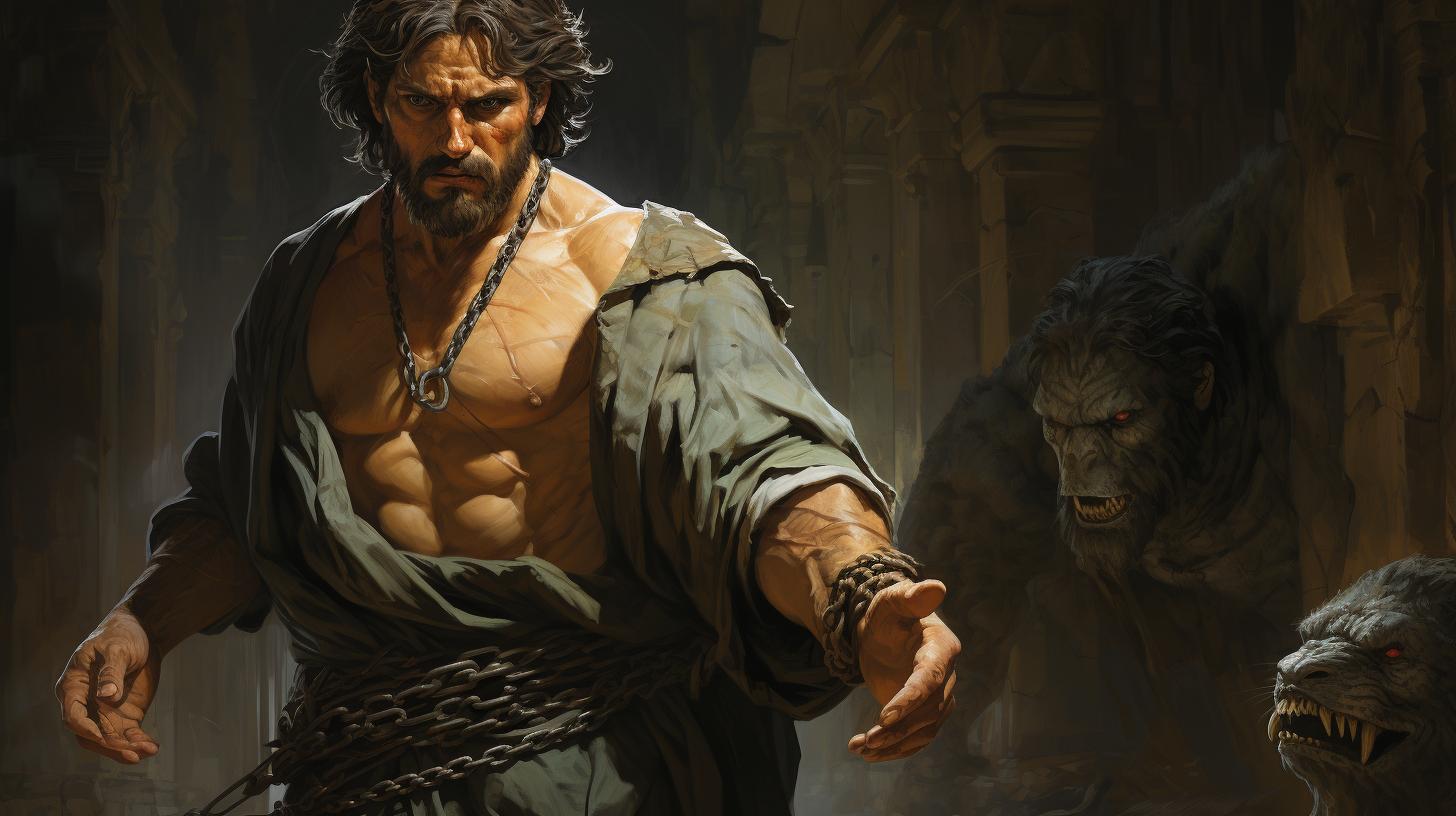
The myth of Theseus and the Minotaur is a captivating tale from ancient Greece. It revolves around a hero named Theseus and a fearsome creature known as the Minotaur. The story takes place in the ancient city-states of Athens and Crete.
Theseus embarks on a dangerous journey to kill the Minotaur, finding his way through the treacherous labyrinth with the help of Princess Ariadne’s guidance. This myth has inspired numerous adaptations and holds a significant place in Greek mythology and its enduring legacy.
From ancient Greece to contemporary culture, it continues to captivate audiences worldwide.
Overview of the Theseus and the Minotaur Myth
The Theseus and the Minotaur myth is an ancient Greek legend that tells the captivating tale of a brave hero named Theseus and a menacing creature known as the Minotaur. This myth has its roots in the ancient cities of Athens and Crete, where the story unfolds.
The Minotaur, a half-man half-bull creature, is born out of the union between Queen Pasiphae and a bull sent by Zeus. King Minos, Pasiphae’s husband, ashamed of the Minotaur’s existence, decides to hide the creature in a labyrinth.
This labyrinth, built by Daedalus in the Minoan Palace of Knossos, becomes the Minotaur’s prison.
The myth further reveals that King Minos uses the labyrinth to imprison his enemies and feed them to the Minotaur. As punishment for the death of his son Androgeus at the hands of the bull, Minos demands that Athens sends seven young men and seven young women every year to be sacrificed to the Minotaur.
Theseus, the son of King Aegeus of Athens, embarks on a journey to Crete after three years of sacrifices. His mission is to slay the Minotaur and put an end to the human sacrifices.
Despite his father’s attempts to dissuade him, Theseus remains determined to accomplish the task.
Before entering the labyrinth, Theseus makes a pact with his father, promising to return with white sails on his ship if he survives, but black sails if he perishes.
Inside the labyrinth, Theseus meets Princess Ariadne, daughter of King Minos, and they fall in love. Ariadne provides Theseus with a thread, instructing him to unravel it as he navigates the maze, ensuring his safe return after slaying the Minotaur.
Following Ariadne’s advice, Theseus successfully kills the Minotaur, saving the Athenians. He uses the thread to find his way back out of the labyrinth. Theseus then takes Ariadne and sets sail for Athens.
However, during a stop in Naxos, Ariadne falls asleep on the shore and misses the boat back to Athens. Distraught, Theseus forgets to change the sails to white, as he had promised to indicate his survival to his father.
King Aegeus sees the black sails from far away and assumes Theseus is dead. In despair, he jumps into the sea, committing suicide. This sea is now known as the Aegean Sea.
Over the centuries, the myth of Theseus and the Minotaur has inspired numerous artists, who have created paintings and sculptures depicting this story and honoring the hero of Athens.
The tale’s enduring legacy can be found in various forms of literature, opera, film, television, and video games, showcasing its enduring impact on culture and storytelling.
The Birth of the Minotaur and the Curse of King Minos
In the ancient Greek myth of Theseus and the Minotaur, the birth of the Minotaur is intertwined with the curse of King Minos. According to the story, the queen of Crete, Pasiphae, fell in love with a bull that was sent by Zeus as a punishment to King Minos. Through her union with the bull, she gave birth to a half-human, half-bull creature known as the Minotaur.
King Minos, ashamed of the existence of the Minotaur, decided to hide the creature away instead of killing it. He commissioned the renowned architect Daedalus to construct a labyrinth, a complex maze, beneath the palace of Knossos to confine the Minotaur. This labyrinth became the creature’s prison, where it would be fed with sacrifices.
It is said that King Minos, in his grief over the loss of his son Androgeus, who was killed by a bull, demanded a harsh punishment from Athens.
As a result, every year, Athens was required to send seven young men and seven maidens to be sacrificed to the Minotaur as a form of retribution for Androgeus’ death.
This curse weighed heavily upon both Athens and King Minos.
The birth of the Minotaur and the curse upon King Minos set the stage for the heroic quest of Theseus, who would ultimately face the creature in battle and attempt to break the curse.
This section explores the origins of the Minotaur and the circumstances leading up to Theseus’ fateful encounter with the fearsome half-bull monster in the labyrinth.
The Minotaur Labyrinth: A Perilous Maze
Within the myth of Theseus and the Minotaur lies the infamous Minotaur Labyrinth, a treacherous maze designed to confine and disorient anyone who dared to enter.
This intricate and winding labyrinth was constructed by the skilled craftsman Daedalus under the orders of King Minos of Crete.
The Minotaur Labyrinth was not simply a physical obstacle, but a symbol of terror and death.
Its twisting corridors and intricate passages concealed the fearsome Minotaur, a monstrous creature with the body of a man and the head of a bull. This menacing beast, the offspring of Queen Pasiphae and a bull sent by Zeus, was locked away deep within the labyrinth, isolated from the rest of the world.
Legend has it that those unfortunate enough to be captured by King Minos or deemed enemies of Crete would be forced into the labyrinth, becoming prey for the bloodthirsty Minotaur. The labyrinth served as both a prison and a feeding ground, its hidden paths providing little chance for escape.
Its dark and treacherous nature instilled fear in the hearts of all who encountered it.
Exploring the labyrinth was a perilous task, as its complex layout made it easy to become lost and disoriented.
The shifting walls, dead ends, and deceptive twists presented a constant challenge for those who dared to venture inside. Only the chosen hero, Theseus, possessed the courage and determination to navigate this foreboding maze, armed with a singular mission to slay the Minotaur and end the cycle of sacrifice.
With each step, Theseus faced the unknown, relying on his wits and resilience to overcome the labyrinth’s intricate design. It is said that in order to find his way back, he unraveled a thread given to him by Princess Ariadne, daughter of King Minos, which acted as a guiding lifeline.
Armed with this lifeline, Theseus successfully made his way through the labyrinth’s dark corridors and confronted the fearsome Minotaur in a titanic battle.
The Minotaur Labyrinth stands as a testament to the indomitable spirit of Theseus and the treacherous challenges he overcame.
Its legendary status as a symbol of both danger and conquest continues to captivate imaginations and serves as a reminder of the heroism and determination exhibited by the ancient Greeks.
Theseus and His Journey to Athens
After three years of tragic sacrifices in Athens, Theseus, the son of King Aegeus, decides to embark on a treacherous journey to Crete.
Determined to end the atrocities caused by the Minotaur, Theseus sets sail with a group of Athenian youths selected for the annual sacrifice.
As the ship approaches the shores of Crete, Theseus can’t help but feel a mix of fear and determination.
He knows that his quest is fraught with danger, but he is willing to face any challenge that comes his way.
Upon their arrival in Crete, Theseus and his companions are met by King Minos, ruler of Crete.
Theseus announces his intention to confront and defeat the Minotaur, daring to challenge the power of Crete’s mighty king.
Before heading into the labyrinth, Theseus meets Princess Ariadne, the daughter of King Minos. Intrigued by Theseus’ bravery and determination, Ariadne offers him assistance.
She gives him a precious gift: a thread that will help him find his way back out of the labyrinth after slaying the Minotaur. With this thread in hand, Theseus feels a newfound sense of hope and guidance.
With the thread tightly wound around his arm, Theseus descends into the dark labyrinth. Each step he takes seems to tighten the grip of anticipation around his heart. He navigates through the twists and turns, his every move fueled by a burning desire to bring an end to the Minotaur’s reign of terror.
The tension rises as Theseus approaches the lair of the Minotaur. Relying on his strength and wit, he engages in a fierce battle with the fearsome creature. The echoes of clashing swords and roars of the Minotaur reverberate through the labyrinth, but Theseus remains resolute.
In a climactic moment, Theseus delivers a fatal blow to the Minotaur, bringing an end to the creature’s menacing existence. With the Minotaur defeated, Theseus follows the thread back towards the entrance of the labyrinth, saving himself and his fellow Athenians.
Emerging from the labyrinth, Theseus is greeted with cheers and tears of joy. His successful journey to Athens marks the triumph of bravery and determination over adversity.
Theseus’ heroic achievement not only saves his compatriots but also establishes his legacy as one of the greatest heroes in Greek mythology.
The tale of his journey to Athens and victory over the Minotaur continues to inspire generations, reminding us of the power of courage and resilience in the face of seemingly insurmountable challenges.
Theseus and the Minotaur: A Deadly Encounter
As Theseus ventures into the dreaded labyrinth, his heart pounds with a mixture of trepidation and determination. Every step amplifies the weight of his mission – to confront the formidable Minotaur and rid Athens of its nightmarish grip.
The air is heavy with tension as he moves deeper into the maze, guided only by the thread given to him by Princess Ariadne.
The dimly lit corridors echo with the haunting sounds of his own footsteps, mingling with the distant growls of the Minotaur. Each turn becomes a calculated risk, as Theseus navigates the intricate web of passageways, determined to reach the heart of the labyrinth where the beast lurks.
His senses heightened, Theseus can almost taste the impending battle as he closes in on the creature that has claimed the lives of so many before him. The walls seem to close in, mirroring the mounting pressure he feels, but he does not waver.
Every fiber of his being is driven by the desire to triumph over the monstrous Minotaur.
Then, in a moment that seems to stretch into eternity, Theseus finally comes face to face with the beast.
Their eyes lock in a primal dance of hatred and defiance. The Minotaur charges, its massive form barreling towards him with unrestrained fury.
But Theseus is prepared. He meets the Minotaur’s relentless onslaught with unmatched courage and skill.
Sword clashes against horn as the battle rages on, the cavernous chamber filled with the clash of steel and primal roars.
With every strike, Theseus chips away at the Minotaur’s strength, determined to deliver the fatal blow.
The hero’s resolve is unyielding, driven by the lives at stake and his unwavering determination to emerge victorious.
Finally, in a climactic moment, Theseus’s blade finds its mark, piercing deep into the heart of the Minotaur. The beast lets out a final bellow of anguish before collapsing to the ground, defeated.
As Theseus stands over his fallen adversary, he is overcome with a mix of emotions – triumph, relief, and a heavy weight of responsibility. The deadly encounter has come to an end, but the impact of his victory reverberates through the walls of the labyrinth and echoes in the hearts of his people.
Theseus emerges from the labyrinth, a hero forged in the crucible of battle. He carries with him the profound significance of his achievement – the liberation of Athens from the grip of fear and sacrifice.
The tale of Theseus and the Minotaur will forever be etched in the annals of Greek mythology as a testament to bravery, determination, and the indomitable spirit of heroism.
The Role of Ariadne: Love, Betrayal, and the Thread of Life
In the enduring myth of Theseus and the Minotaur, Ariadne, the daughter of King Minos, plays a pivotal role that intertwines love, betrayal, and the preservation of life.
Faced with the beastly Minotaur and the treacherous labyrinth, Theseus finds an unexpected ally in Ariadne.
Ariadne’s initial encounter with Theseus sparks a deep connection, and she falls hopelessly in love with the brave hero from Athens.
Overwhelmed by her feelings, she yearns to protect him from the grisly fate that awaits within the labyrinth walls.
To ensure Theseus’ survival, Ariadne hatches a plan. She presents him with a precious thread, advising him to unravel it as he ventures into the treacherous maze.
This simple but ingenious tool becomes Theseus’ lifeline, guiding him back to safety after triumphing over the Minotaur.
However, tragedy befalls Ariadne as her selfless act of love quickly turns into heartbreak.
Once Theseus emerges victorious, he and the other Athenians set sail for home, inadvertently leaving Ariadne behind on the island of Naxos. Abandoned and abandoned, she watches helplessly as the ship disappears on the horizon.
Theseus’ inaction haunts him as he realizes his forgotten promise to change the sails to white, signaling his survival to his grieving father. The black sails, unseen by Theseus, lead King Aegeus to believe his beloved son perished, plunging him into inconsolable sorrow.
The tale of Ariadne serves as a cautionary reminder of the complexity of love and the consequences of when promises are forgotten or unfulfilled. Her devotion and sacrifice highlight the intricate web that love weaves and the eternal impact it can have on individuals and their choices.
Escape from the Labyrinth: Theseus’ Victory
After navigating the treacherous labyrinth constructed by Daedalus, Theseus finally confronts the monstrous Minotaur in the heart of the maze. With his determination and bravery, Theseus engages in a fierce battle against the fearsome creature.
Armed with his sword and shield, he strategically maneuvers, anticipating the Minotaur’s every move.
Their clash is fierce, echoing through the winding corridors of the labyrinth. Theseus, fueled by his determination to end the sacrificial tributes and free his people from the grip of fear, strikes the decisive blow.
The Minotaur is defeated, and Theseus emerges victorious.
Having fulfilled his mission, Theseus retraces his steps through the labyrinth. Following the thread provided by Princess Ariadne, he skillfully finds his way back to the entrance.
As he emerges from the labyrinth’s complex network of passages, Theseus carries with him the knowledge of his triumph.
News of Theseus’ victory spreads like wildfire through Athens, filling the city with joy and relief.
The sacrificial tributes have come to an end, thanks to the hero’s courageous act. Theseus is hailed as a savior and a symbol of hope for the future.
This victory marks a turning point in the myth of Theseus and the Minotaur. It represents the triumph of the human spirit over adversity and the power of bravery and heroism to overcome even the most daunting challenges.
This enduring tale continues to inspire and captivate audiences, serving as a reminder of the strength within each of us to face our fears and emerge victorious.
The Aftermath: Tragedy and Sacrifice
After the triumphant victory over the Minotaur, the myth of Theseus and the Minotaur takes a tragic turn as the aftermath unfolds.
Theseus, along with the rescued Athenian captives, sets sail back to Athens, carrying the weight of their recent ordeal.
However, unbeknownst to Theseus, a heart-wrenching turn of events occurs during a stopover on the island of Naxos.
Princess Ariadne, who had played a pivotal role in Theseus’ successful journey through the labyrinth, falls asleep on the shore and misses the departure. As the ship sails away, Ariadne is left stranded on the island, parted from her newfound love.
Devastated by Ariadne’s abandonment, Theseus, consumed by grief, forgets to change the black sails of the ship to white, as he had promised his father, King Aegeus. Approaching the coast of Athens, King Aegeus spots the dark sails from afar, believing his beloved son to be dead.
Consumed by sorrow and despair, King Aegeus tragically takes his own life, plunging into the sea. This fateful act forever names the body of water “the Aegean Sea,” serving as a constant reminder of the sacrificial nature of this mythic tale.
The aftermath of Theseus’ journey reverberates through Athens, plunging the city-state into mourning and agony. Despite Theseus’ heroic success in slaying the Minotaur and saving his fellow Athenians, the toll on his personal life and royal lineage is immeasurable.
The tragedy and sacrifice associated with the aftermath of Theseus’ quest serve as a stark reminder of the complex nature of heroism and the profound consequences that hero’s actions can have on their own lives and the lives of those around them.
The myth of Theseus and the Minotaur continues to captivate audiences, reminding us of the enduring power and impact of ancient Greek mythology.
The Legacy of Theseus and the Minotaur Myth
The myth of Theseus and the Minotaur has left a lasting legacy in Greek mythology and continues to captivate audiences to this day.
This timeless tale of heroism, adventure, love, and betrayal holds significant cultural and literary importance.
1. Influence in Art and Literature:
- Throughout history, the story of Theseus and the Minotaur has inspired numerous artists, writers, and poets.
- The myth has served as a subject of many paintings, sculptures, and other works of art, capturing the dramatic and intense moments of the story.
- Authors and poets have drawn inspiration from the myth, incorporating its themes of bravery, sacrifice, and overcoming obstacles into their own literary creations.
2.
Symbolism and Themes:
- The myth explores themes such as the triumph of good over evil, the power of love, the consequences of greed and hubris, and the importance of perseverance and heroism.
- Theseus symbolizes courage, determination, and the indomitable spirit of the hero, inspiring countless individuals throughout the ages.
- The labyrinth, a symbol of complexity and challenges, represents the obstacles and hardships one must navigate in life.
3.
Moral Lessons:
- The story imparts valuable moral lessons, emphasizing the importance of integrity, loyalty, and honoring one’s commitments.
- It teaches the consequences of making hasty decisions and the price one may pay for succumbing to hubris or succumbing to temptation.
- The tale warns about the dangers of unchecked power and the immorality of forcing others to suffer for one’s own gratification.
4.
Cultural Significance:
- The myth of Theseus and the Minotaur holds a special place in Greek culture, showcasing the valor and heroic deeds that were admired and celebrated in ancient Greece.
- It serves as a reminder of the intricate relationship between gods and humans, reflecting the belief in divine interventions and the consequences of human actions.
- The myth’s endurance over time speaks to its universal appeal and its ability to resonate with audiences across different cultures and generations.
In conclusion, the legacy of Theseus and the Minotaur myth is far-reaching, inspiring artistic creations, conveying profound moral lessons, and holding a significant place in Greek culture.
Its themes and symbolism continue to captivate and resonate with individuals, ensuring that the myth remains a timeless and cherished tale.
Adaptations and Impact: From Ancient Greece to Contemporary Culture
The myth of Theseus and the Minotaur has left an indelible mark on the collective imagination, inspiring countless adaptations and finding resonance in various art forms. From ancient Greece to contemporary culture, this timeless tale continues to captivate audiences and influence creative works.
Throughout history, artists, playwrights, and poets have reimagined the myth of Theseus and the Minotaur in their works. Paintings, sculptures, and mosaics have depicted the heroic battle between Theseus and the monstrous Minotaur, capturing the intensity and drama of their encounter.
These visual representations testify to the enduring power of the myth and its ability to inspire artists across different periods.
In addition to visual arts, the story of Theseus and the Minotaur has found its way into literature, theater, and film.
Playwrights like Euripides and Sophocles incorporated elements of the myth into their plays, exploring themes of heroism, honor, and sacrifice. In later centuries, renowned authors such as Jean Cocteau and Albert Camus drew inspiration from the myth in their literary works, infusing it with their unique perspectives.
With the advent of cinema, the myth of Theseus and the Minotaur found a new medium of expression. From the classic film “Jason and the Argonauts” to modern retellings like “Percy Jackson and the Olympians,” filmmakers have embraced the timeless appeal of the myth, bringing it to life on the silver screen.
These adaptations have introduced new generations to the legendary heroism of Theseus and the fearsome presence of the Minotaur.
The influence of the myth extends beyond traditional artistic forms. The gaming industry has harnessed the myth’s enthralling narrative, crafting immersive video games that allow players to embark on their own heroic quests within the labyrinth.
These interactive adaptations provide a unique and engaging avenue for audiences to explore the myth’s rich and complex world.
Moreover, the enduring legacy of Theseus and the Minotaur can be seen in popular culture.
References to the myth abound in literature, music, and even advertising. The symbolism of Theseus’ bravery and ingenuity resonates with contemporary audiences, serving as a powerful metaphor for overcoming personal challenges and confronting inner demons.
In conclusion, the myth of Theseus and the Minotaur has transcended time, remaining a source of inspiration and fascination in various artistic mediums. Its enduring impact on literature, visual arts, theater, film, and popular culture attests to the universal allure of this age-old tale of heroism, love, and triumph.
.











